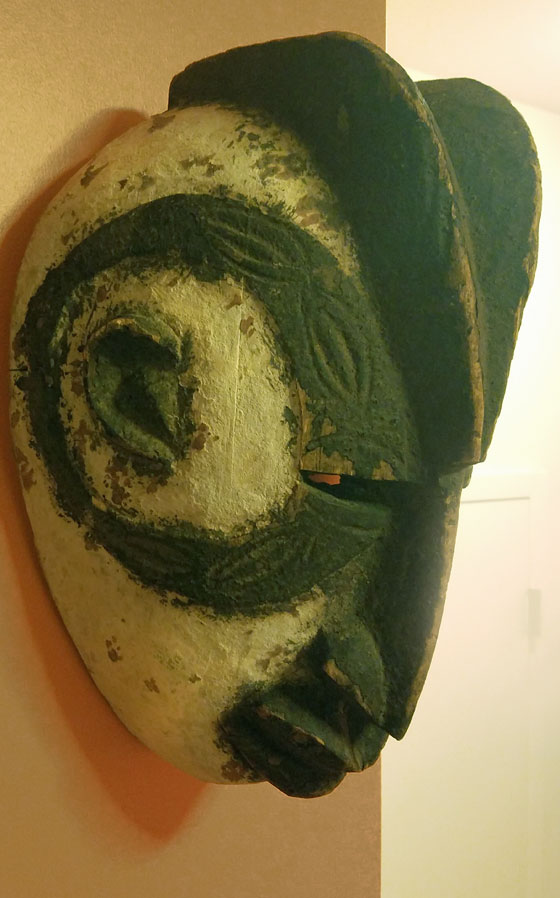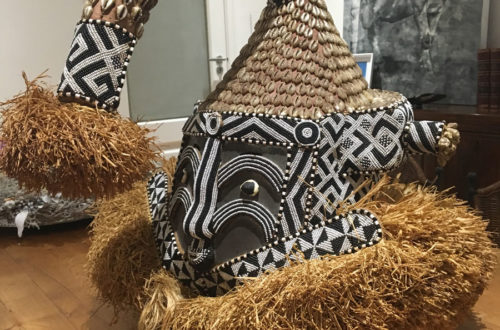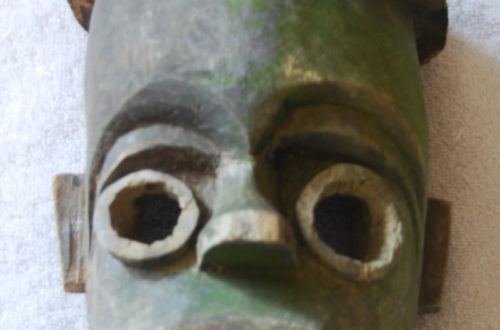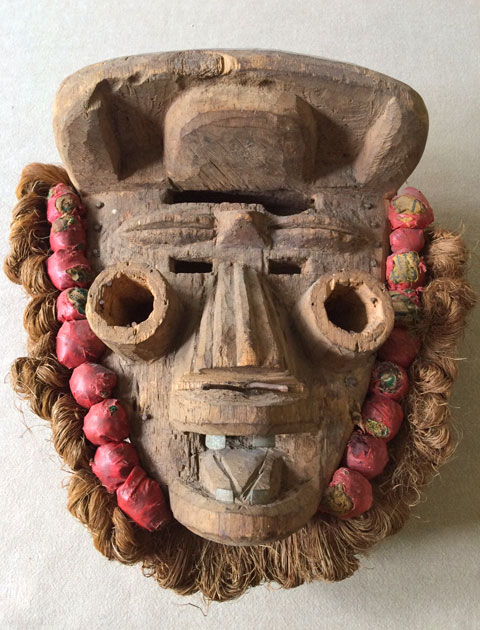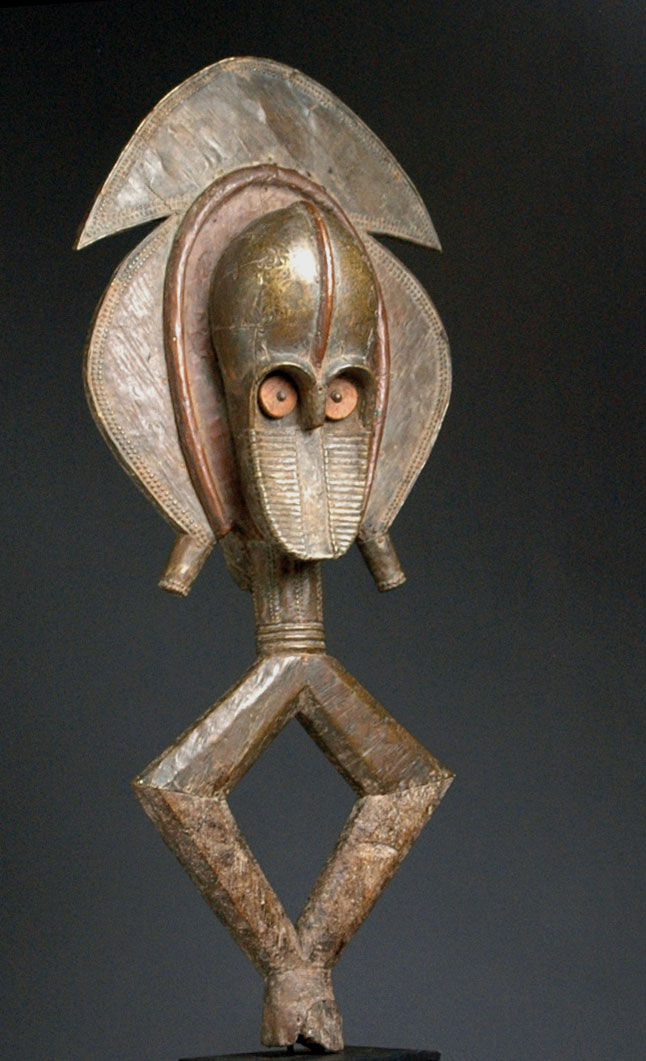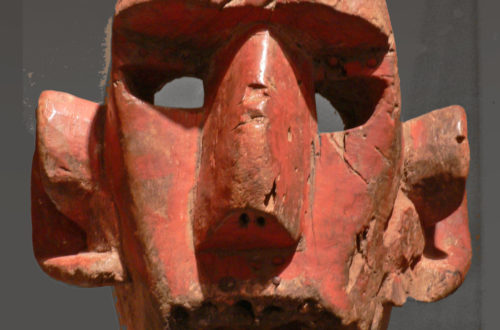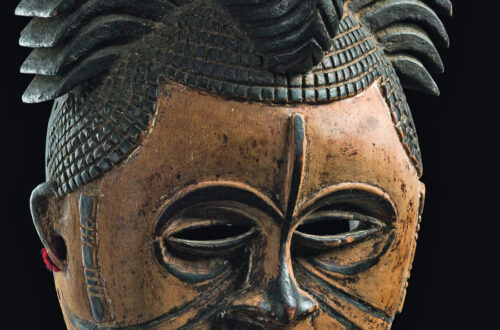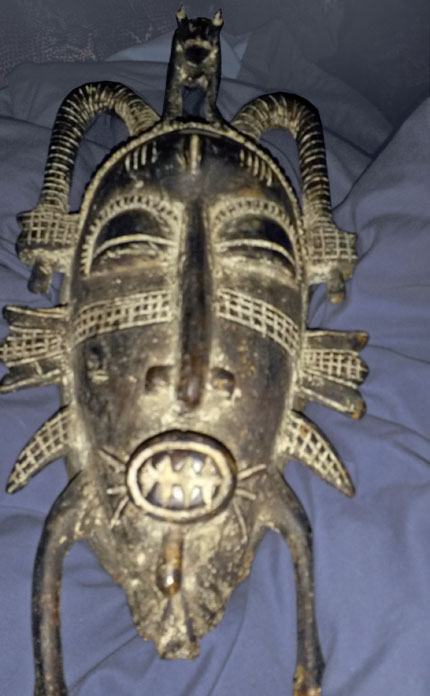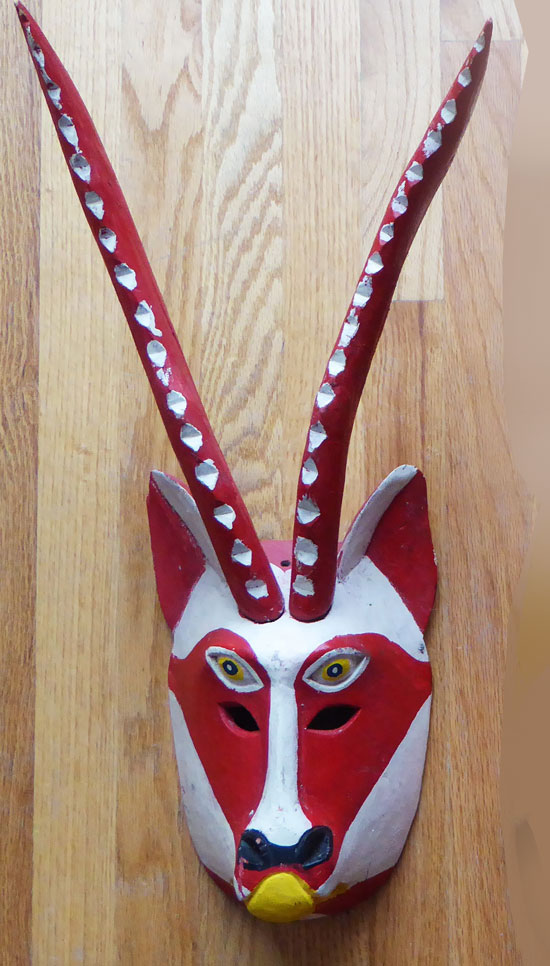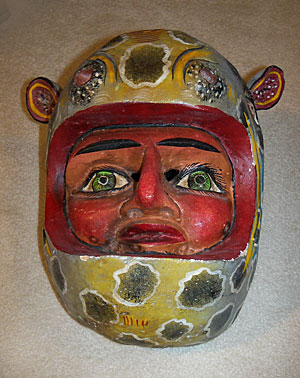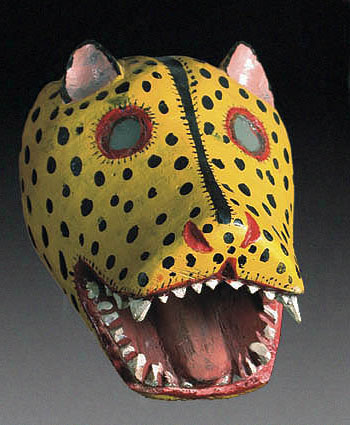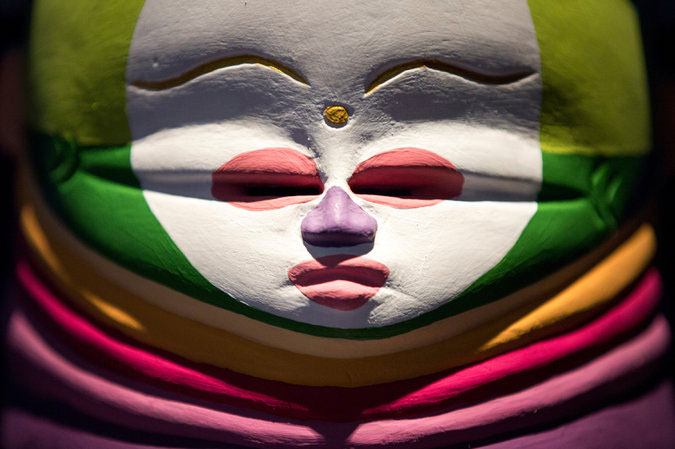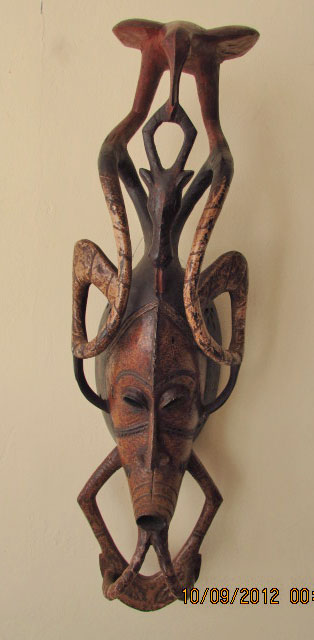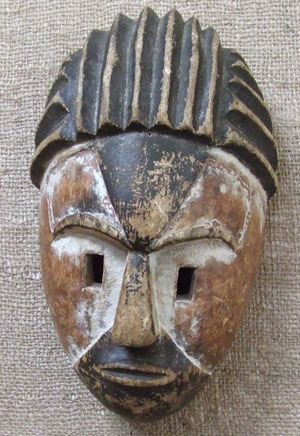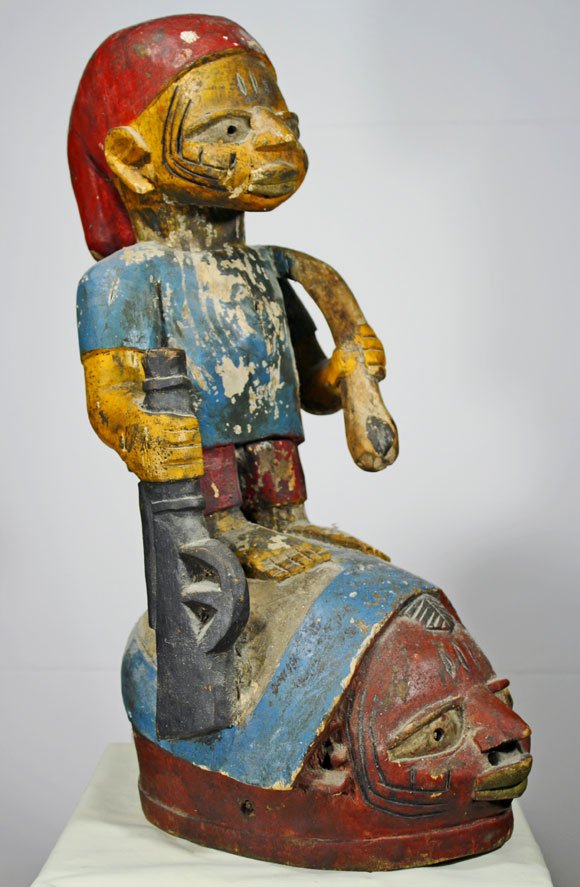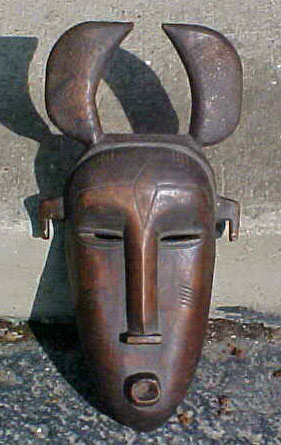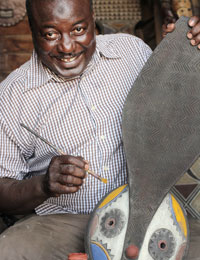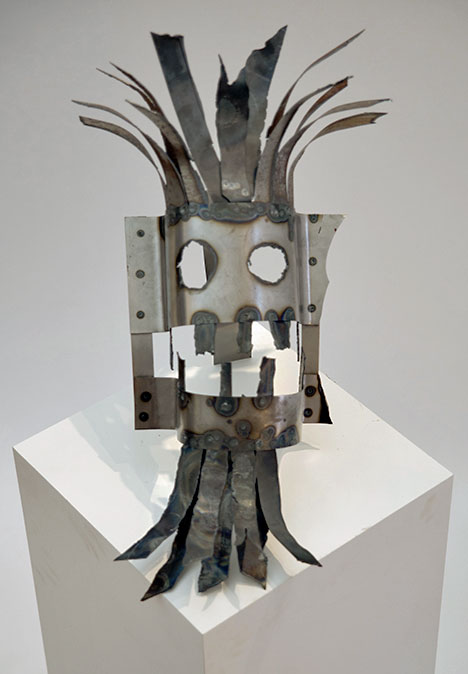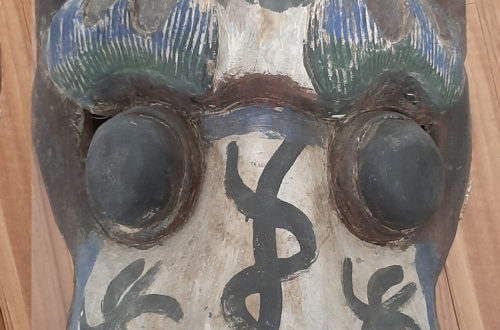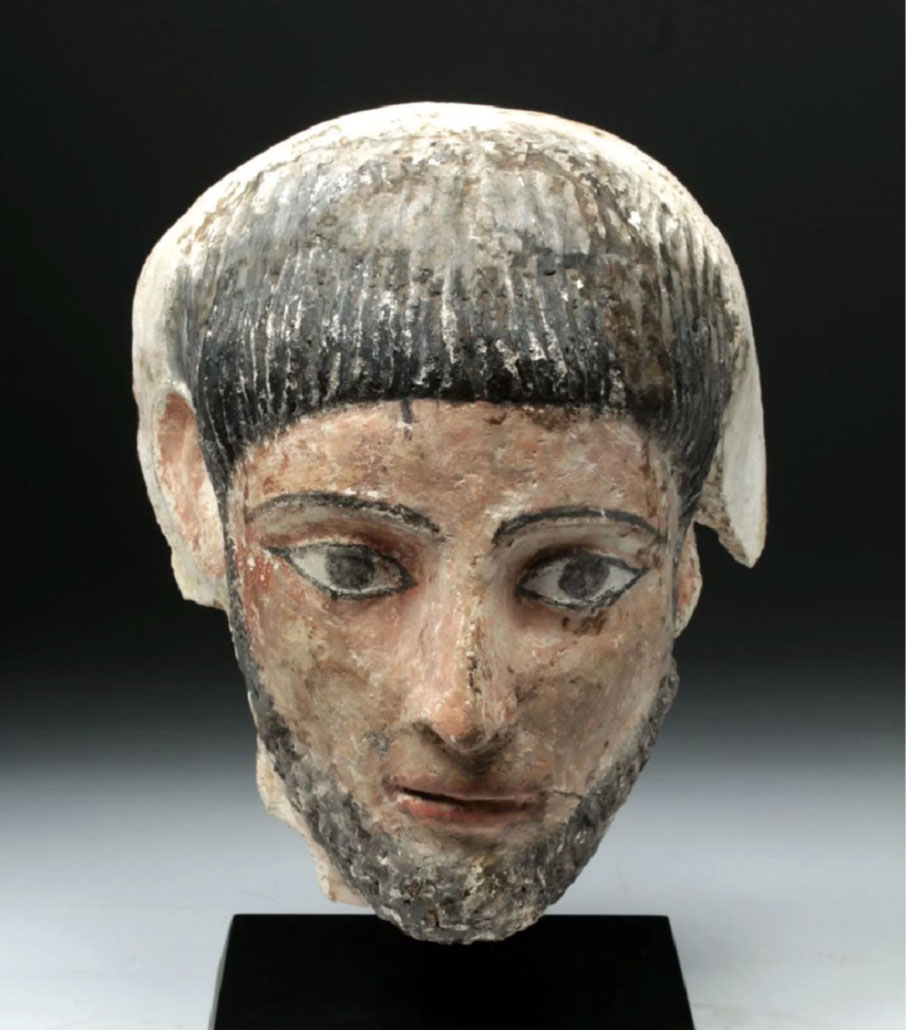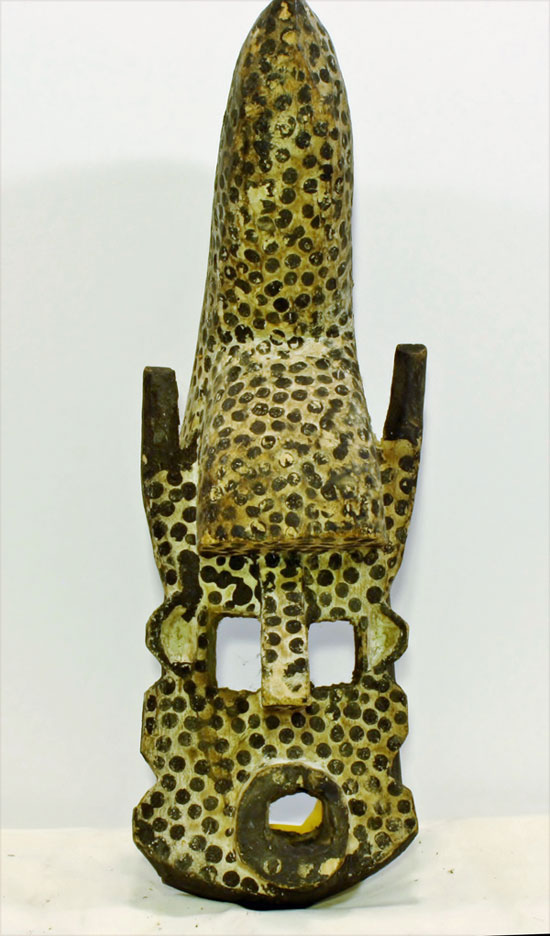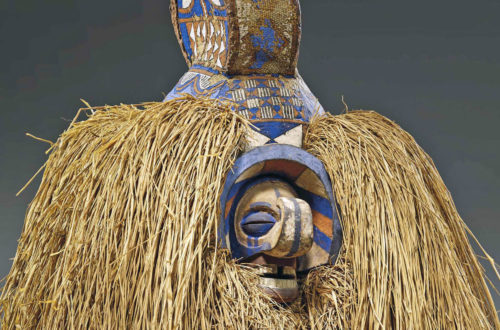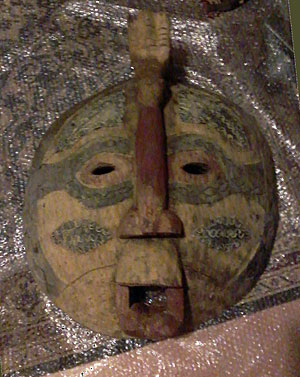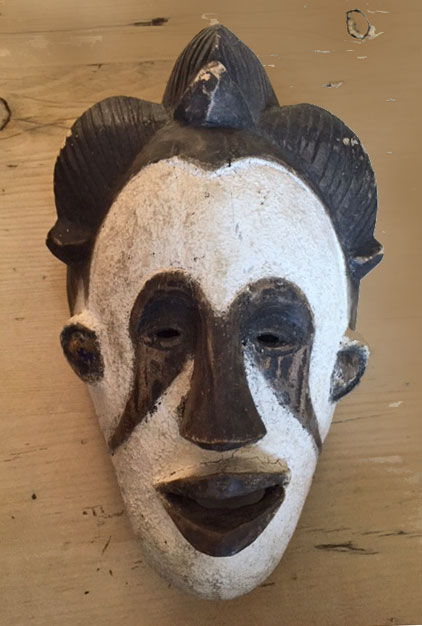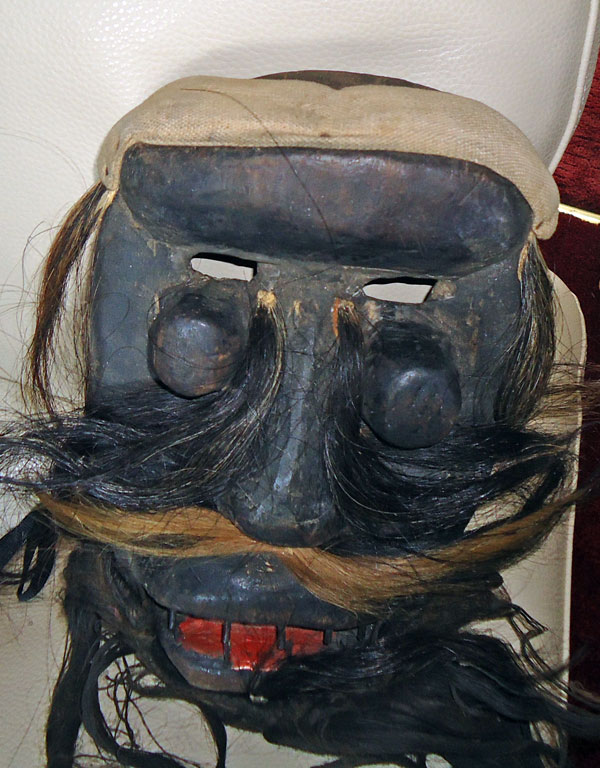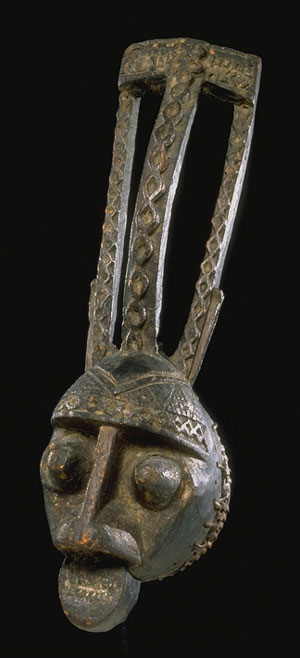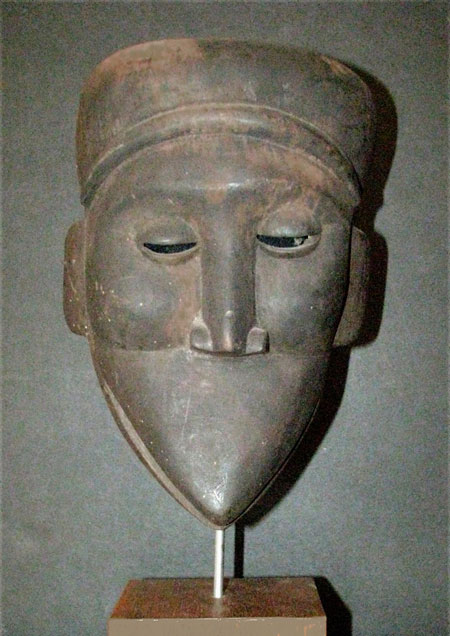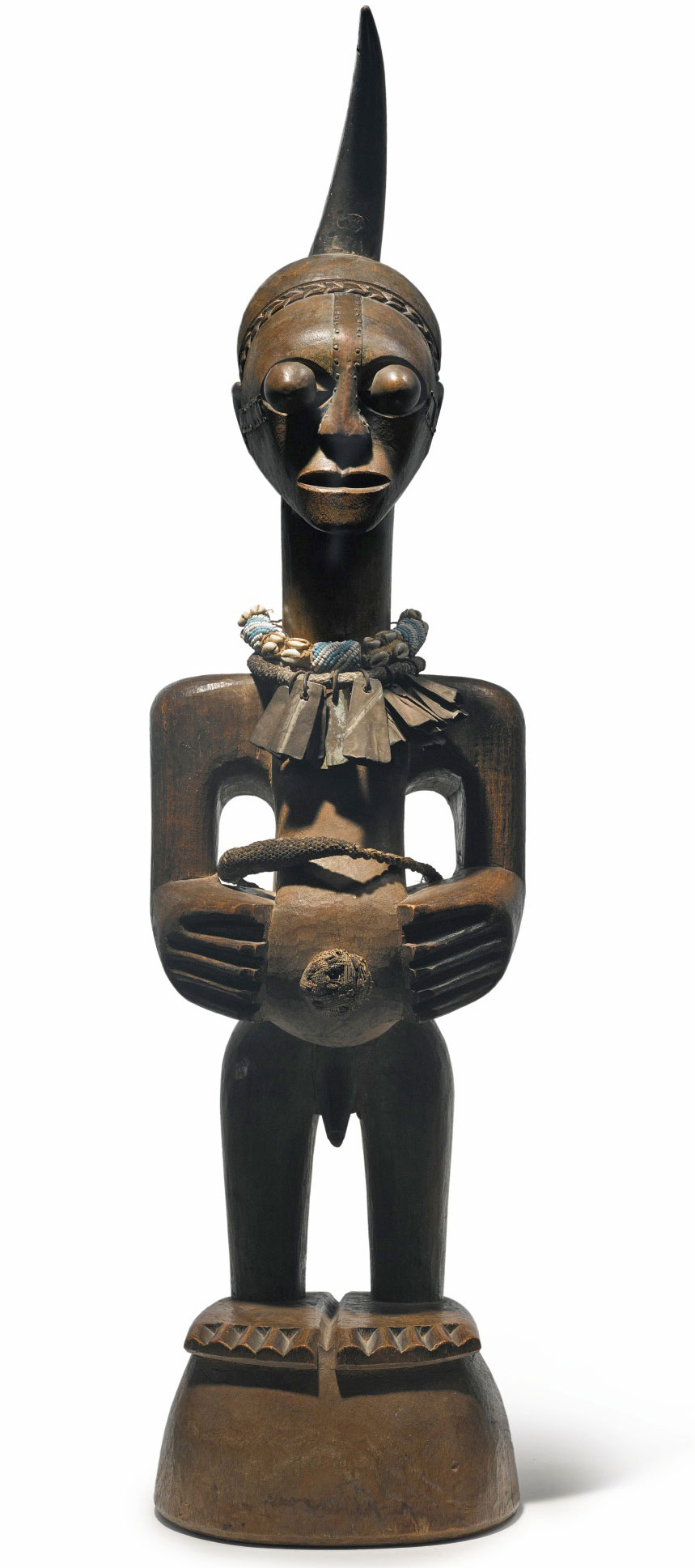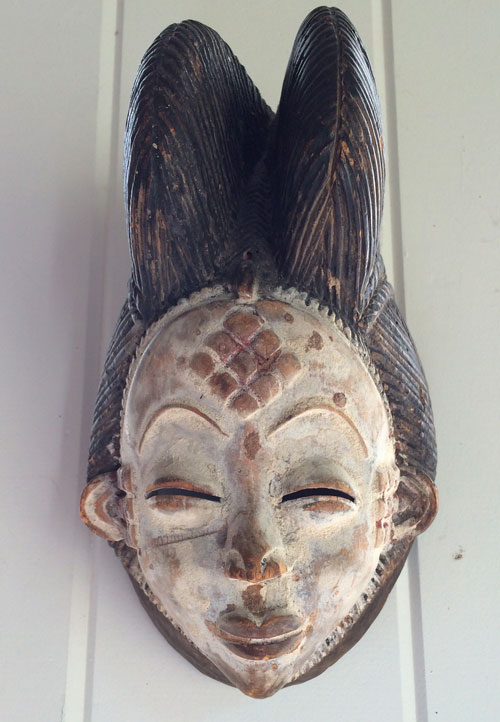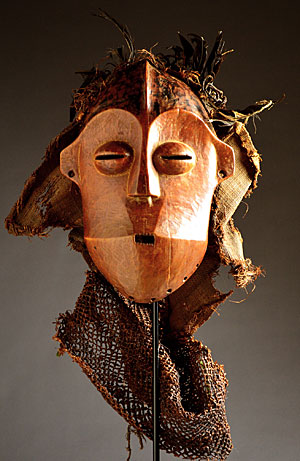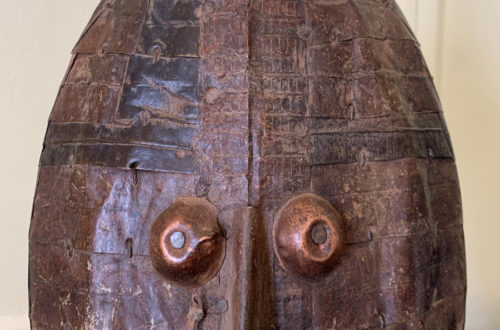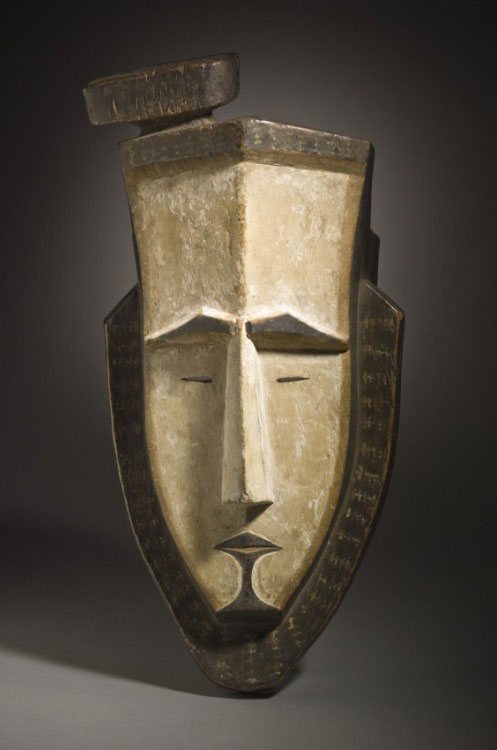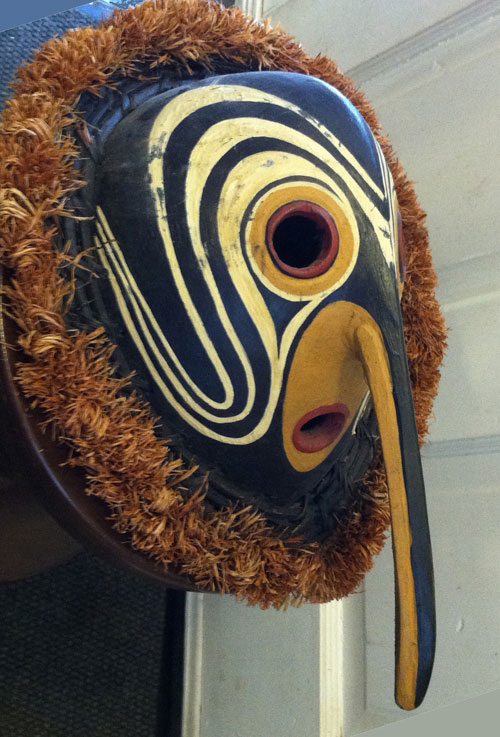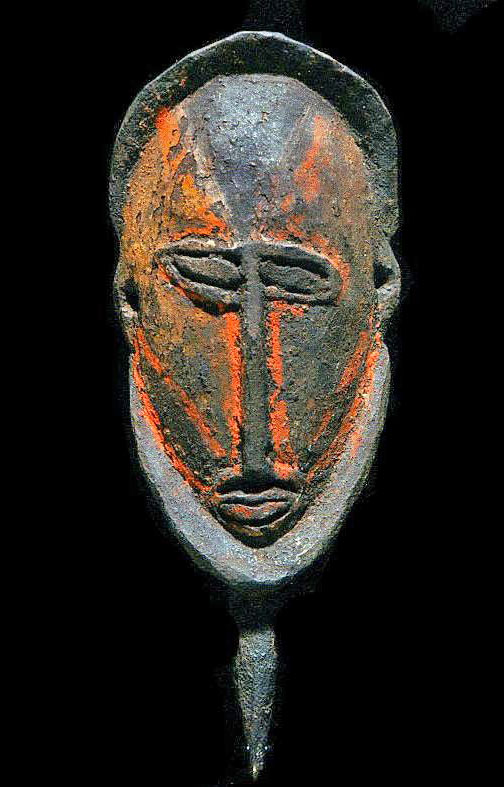Q: A friend of mine gave me this mask, said it was given to him by a client from Guinea. I am curious where in Africa this may be from and any symbolism. Thanks, Yudith, 1020 A: It looks like a mask from the Igbo people of Nigeria. You will see many that look similar. Igbo is one of the largest ethnic groups in Africa, but they are far away from Guinea. I like the way the tear marks are large and circular, and the narrow, double crown fits so well between the two. It appears to be old, but probably isn’t. Tourists and collectors like to think a…
-
-
Something else different
I recently posted a Songye spirit figure (#1012, Aug 27) to remind our collectors that there are other types of African traditional art that would fit well in their collections. Now I’m posting a Kota reliquary figure. Collectors who like African masks often display these as well. The Kota people live in Gabon in west-central Africa. Along with several closely related groups, they are renowned for creating distinctive spirit figures that watch over reliquary baskets containing the bones of important ancestors. The face of this reliquary figure is dressed with sheet brass, a precious material that has the power to deflect malevolent forces. It is tacked down with flat, hand-wrought…
-
Another wonderful mask from Candelario
Q: And here is a photo of the newer masks he was making at the time (90’s) with his sons. I probably have some more in a box somewhere… Hope they are of use. Chris, 1018 A: Please check out blog #898 which was posted Jan 23, 2016. You can recognize the style and creativity of Don Herminio Candelario from Suchitlan, Colima. His masks are usually made for the local dancers, and though they represent different characters including many animals, they are always colorfully different from the masks made by other carvers. Like any great artist, Don Herminio has his own style. This much artistic freedom is rarely on display…
-
Interesting show at Brooklyn Museum
This is inspired by the Bundu mask which is used by Mende girls in their transition to womanhood. Sande Society helmet masks like this are usually black, never colorful. What we have here was done by a modern artist from Africa. It is part of a unique exhibit called “Disguise: Masks and Global African Arts” at the Brooklyn Museum until Sunday, Sep 18th. I know I have a few readers who live in the NYC area. I think you will enjoy the show. If not, the Museum also has a fine permanent collection of African tribal art. Here are two websites that will tell you more. http://www.blouinartinfo.com/news/story/1473187/datebook-brooklyn-museum-art-exhibit-on-masks-disguise-and http://www.nytimes.com/2016/06/24/arts/design/disguise-masks-and-global-african-art-where-tradition-meets-avant-garde.html?_r=0
-
The always entertaining Gelede
Q: My father acquired this mask in the Philadelphia area over 20 years ago. We know that it is a Gelede mask. It is one of the favorites of the collection. We would love to get your opinion. Any info is appreciated. Dan, 1016 A: They’re made and still used by the large Yoruba culture of Western Nigeria and Benin. You never know what you will see on top of these entertaining helmet masks. The Gelede cult is concerned with the appeasement of witches. The masquerades are in honor of mother– whose power is especially manifested in elderly women, female ancestors, and the female god, Orisha. In this case, the…
-
Modern wall art
Q: I make masks and was wondering if you had some suggestions as to how my work could be exhibited and who might be the best people to contact. Here is a link to my website: I would be happy to send a book of my latest work if you tell me a mailing address. Alexander, 1015 A: Though most of our time is spent dealing with ethnographic masks, we are also interested in protective, movie, Halloween, fantasy and fetish masks. This great looking piece falls into another category known as fine art, specifically, modern metal sculpture. I hope you enjoy it. A http://alexpbard.com/masks/ (email) abard34@yahoo.com
-
Leopard mask from Mali
Q: My father has an extensive collection of African masks and statues, some of which we have identified, and some that are still a mystery. He acquired this mask, along with most of his collection, between 15 and 20 years ago in Philadelphia at stores and festivals. This mask is wood with what appears to be old paint. Any information is appreciated. It is likely that he paid less than $100 for the mask. Dan, 1014 A: I would say it’s a Dogon leopard mask from Mali, but it could be some other critter. The Dogon people have created more than eighty mask types to represent characters in their…
-
Crazy West African mask
Q: This mask is 26cm high by 17cm wide and was bought in Bamako, Mali in 1986. Any info would be appreciated. Peter, 1013 A: Here is a mask that doesn’t resemble the styles of the country where it was purchased. It looks a little more like something from 600 miles to the Southwest. I’m thinking of the masks of the Bete, Guerre, and Wobe people in the Ivory Coast and Liberia. I hope someone will make a comment. This is a neat looking African mask, but is has very little value if it can’t be identified accurately. Save Save Save
-
Something different
I’ve never pictured anything other than masks on this site. But August has been slow. So let’s show something else that is closely related. Wooden masks are used to depict deities or ancestors. Often they are believed to channel spirits when worn by ceremonial dancers. But statues and sculptures are used to represent, connect to, or communicate with spiritual forces in different ways. Here is a beautiful spirit figure. The Kunin Songye Power Statue we have here is by an important carver and is unusual in its design. There is also sacred materials added to the inside of the belly, plus various adornments. It doesn’t look like a Kifwebe mask…
-
Rare Micronesian mask
This is an old mask called a tapuanu acquired circa 1885 in the Mortlock Islands (part of the Carolines). What makes it unusual is that the Micronesian people, who occupy a very large portion of the Pacific Ocean, are seldom interested in masks. Unlike those of the Indonesian and Melanesian cultures that are heavily into masquerade, you won’t see Micronesian masks very often. Our handsome tapuanu is carved wood 21 inches tall. It resides at the Los Angeles County Museum of Art (LACMA). A+ Save
